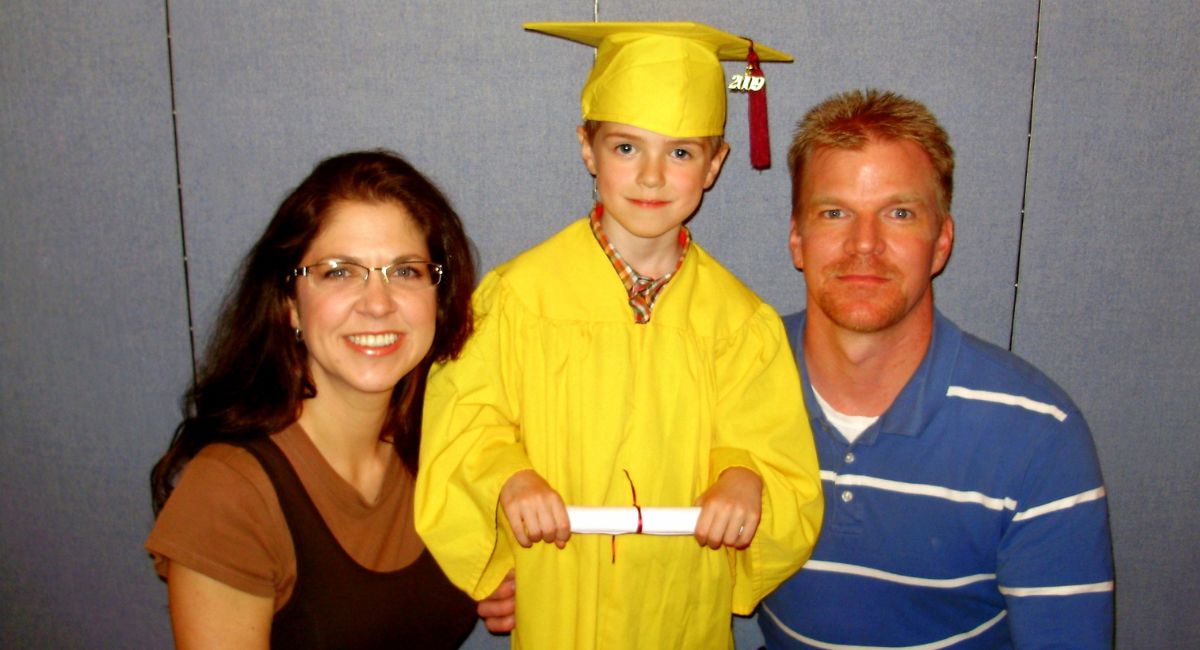When Kimberly Rippentrop and her husband John discovered she was pregnant for the second time, she was sure to be cautious. Her first pregnancy had ended in miscarriage and she wanted to make sure she did everything possible to ensure her second baby was healthy. Then a routine sonogram changed everything — and proved that even when things are out of our control, God has a plan.
During the ultrasound, the sonographer seemed to be spending a lot of time on the baby’s heart and ultimately determined that there were some concerns. As a result, Rippentrop was sent to undergo a high-risk sonogram a few days later, and while in the waiting room, she watched another woman and her husband leave the office in tears.
Rippentrop told Live Action News, “I looked at my husband and said, ‘I hope that’s not us in 20 minutes.’ And it was.”
The high-risk sonogram revealed that Baby Seth’s heart was asymmetrical, and that a cardiologist would need to be consulted to determine a diagnosis. When Rippentrop went to her cardiology appointment, Cheri and Dwayne — the same couple from the high-risk sonogram appointment — were there as well. The two couples spoke for a bit before their appointments, unaware of how connected they would soon become.
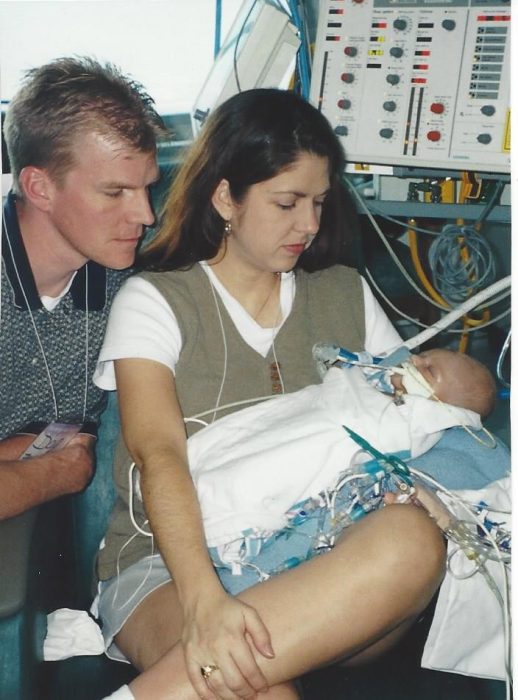
Photo courtesy of Kimberly Rippentrop. Do not reprint.
The diagnosis
The cardiologist told the Rippentrops that Seth had a severe cardiac defect, and that his prognosis was not good. She was 27 weeks pregnant at the time, and doctors offered to do an amniocentesis to check for conditions such as Down syndrome. Rippentrop learned that an amniocentesis carries a risk of miscarriage, so she refused to undergo one.
“It doesn’t matter if he has Down syndrome,” she said reflecting on that time. “We will figure out the heart defect when he’s born. And I’m loving the child God has given me no matter what.”
It was 2002 in Texas, and according to the ACLU, abortion wouldn’t be prohibited after 24 weeks in the state for three more years. Seth could have been targeted for abortion then, but today, Texas law protects babies who receive a prenatal diagnosis.
“I was crying driving home,” said Rippentrop. “I vividly remember kind of being jealous of others with multiple children when we’re just trying to have one. And this is where the story is so frustrating, just talking about Seth’s heart defect. We wanted to have a child so badly and yet we were driving by an abortion clinic knowing there were perfectly healthy children being killed out of convenience. … We were going to fight for this child and we were told that he probably wouldn’t make it to birth.”
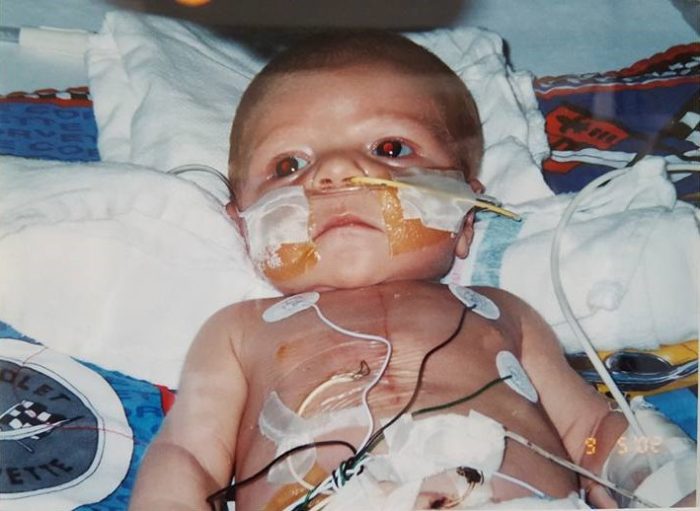
Photo courtesy of Kimberly Rippentrop. Do not reprint.
Rippentrop was instructed to try to keep her blood pressure down and monitor Seth’s movements. The goal was to make it to 37 weeks before Seth was delivered. This would give him a stronger chance of survival after birth, but there was a chance he wouldn’t survive those 10 weeks — and if he did, they were told he would only survive for a few days after birth.
At 37 weeks, Seth was delivered via C-section and his mother kissed his forehead before he was whisked away for testing.
He was then taken to the children’s hospital, were he was immediately diagnosed him with Hypoplastic Left Heart Syndrome (HLHS), in which the left side of the heart does not form properly and is unable to effectively pump blood throughout the body. He was scheduled for surgery.
“HLHS requires multiple surgeries but the main procedure for the reconstruction is three phases — The Norwood, The Glenn, The Fontan,” said Rippentrop. “Seth also had five additional heart caths on top of the three reconstructive surgeries all before he was four. All required full sedation and high risks. Strokes and heart block are not uncommon with these so they’re still a big deal. His last cath was to insert a cardiac implant. He’s also going to have another cath next year.”
At the time of Seth’s birth, many children with the condition were dying in the first few months of life. In fact, before the 1980s, said Rippentrop, children with HLHS were simply sent home to die. But in the 1980s, doctors began to carry out a phased heart procedure in hopes of saving the lives of children with HLHS.
Seth would need to undergo three phases of multiple surgeries to reconstruct his heart. The first surgery would occur just a few days after birth, the second at six months, and the third would take place between ages two and four.
The surgeries
Seth underwent the first surgery successfully, but by four weeks old, he had crashed multiple times. At this point, he was the sickest baby in the ICU, and was listed for a heart transplant.
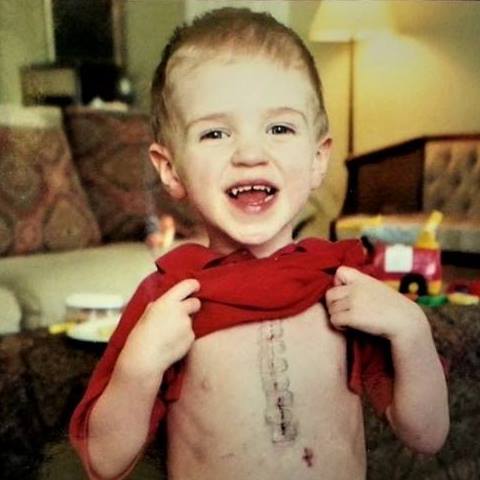
Photo courtesy of Kimberly Rippentrop. Do not reprint.
Amazingly enough, right next door to him was Tate, the son of Cheri and Dwayne, who had also been diagnosed with HLHS. The families would grow close over their time together in the hospital.
“Seth was listed for a transplant at four weeks old,” said Rippentrop. “But God had a whole other plan. Within five days, he was getting sent from the ICU to the [regular] floor — a step-down room — and we were talking about bringing him home in six or seven weeks.”
Seth was sent home under the guidance that if he did not dramatically improve, doctors would have no other choice but to do the transplant. His parents were told not to let him cry and to make sure he ate. Five months later and still doing better than expected, Seth was examined to see if he could proceed to the next phase of the surgeries.
Doctors determined he was exactly where he needed to be to avoid a transplant and undergo surgery as planned.

Photo courtesy of Kimberly Rippentrop. Do not reprint.
“I wasn’t doing anything but praying,” said Rippentrop. “This is all God. Seth was out and home within a week [following his second surgery]. He did amazing.”
At age two and a half, Seth underwent the final phase of surgery, which is considered the hardest. Doctors were concerned that his heart would not be able to handle this step, but he “breezed through and was home in six days,” said Rippentrop. “It was the sickest I had ever seen him but he got through it amazingly. This was literally, for me, the miracle that we got that he would actually come home as healthy as he was.”
Growing up
Seth is now 21 years old and attending college where he and Tate — Cheri and Dwayne’s son — are roommates.
“Doctors told us he was going to be — if he survived — small and frail for his age and have learning difficulties,” said Rippentrop. “He is six foot three, hardly ever sick and is an astrophysics major on the dean’s list working towards summa cum laude. He is applying for graduate school in the spring. They told me this and they told me that but he defied everything because we gave him a chance for life. And what I tell him is doctors don’t know everything and God has a plan.”
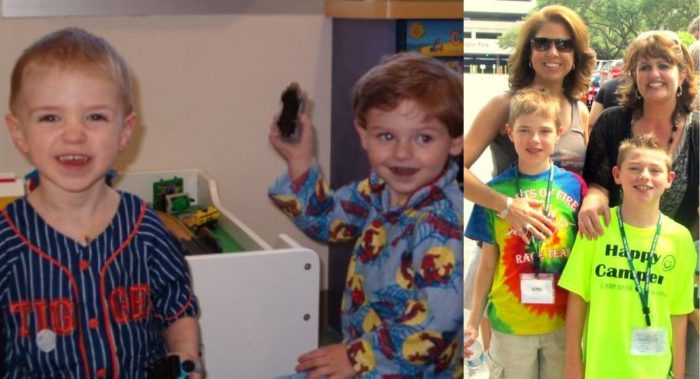
Seth and Tate after surgery and at camp. Photo couresty of Kimberly Rippentrop. Do not reprint.
Rippentrop explained that she now has a passion to tell Seth’s story — not to build sympathy for her family, but to show everyone what God can do and what He did.
Despite all of the concerns doctors had, Seth leads a typical life of a 21-year-old student. He takes aspirin and blood pressure medication daily but that’s “no big deal” and he goes to visit the doctor a couple of times a year, also “no big deal.” Doctors have spoken of the possibility of a double transplant of heart and liver, but there is no official timeline regarding when that will happen. In the meantime, Seth has a girlfriend and is enjoying life and making plans for his future.
“For HLHS or any serious condition, it’s still going to be a harder life and a better chance of passing away early or needing surgery, statistically,” said Seth. “…You can’t end a life early in order to avoid suffering in life. If that was the case then none of us would have been born. We’re all going to have pain. It’s a broken world. … Some things are going to be hard but some things are going to be enjoyable.”
Hope for other families
The family wants other families facing a challenging diagnosis not to lose hope.
“You don’t give up on your child just because life gets hard. … Don’t give up on the miracle that God can give to you. No one knows how long life is — five minutes, 50 years, 100 years. … When the doctors say your child is going to have a hard life, tell them to prove it. How do you know that? Stats show Seth should have died. He had a 40% chance of life,” said Rippentrop. “No one escapes pain. No one escapes hardships.”
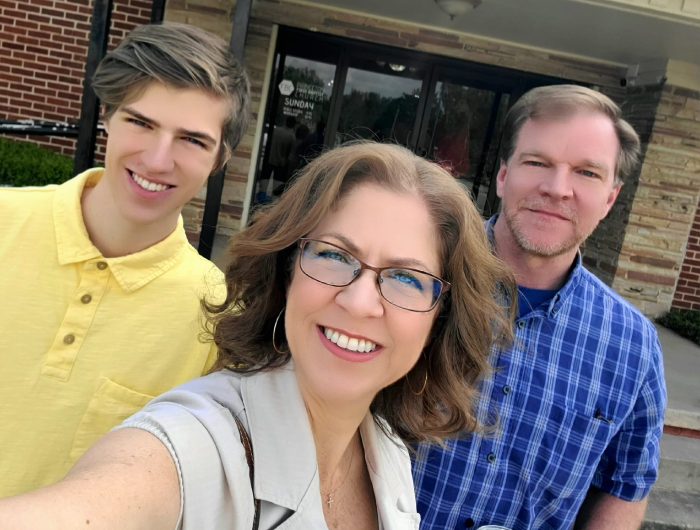
Photo courtesy of Kimberly Rippentrop. Do not reprint.
She advises parents to choose life over abortion.
“Either I wait and let God figure out my child is going to live a day or I choose to eliminate my child now. I will have much less guilt and pain if I just enjoy that day rather than make that choice…,” she said. “I would rather enjoy the love that child has and the joy and love I can give that child for however long that is than to be the reason that child didn’t get that. I don’t want to be the reason the child didn’t get that. If the child is going to die, the child is going to die. Don’t be the reason the child dies.”
Research shows that Rippentrop is right. A study from Duke University revealed that women who chose abortion after a prenatal diagnosis of an “incompatible with life” condition reported “significantly more despair, avoidance, and depression than women who continued the pregnancy.” These parents know that they voluntarily ended the lives of their living children. Comparatively, parents who carry their baby to term report feeling more emotionally prepared for the child’s death, and they have a sense of gratitude and peace about their child’s life.
“Stop looking for guarantees and start looking at the life that God has provided and created,” said Seth. “It doesn’t matter what the guarantees are; there are no guarantees of easy, of happy all the time. No matter what your diagnosis and prognosis, there are no guarantees. With abortion, it’s a 100% guarantee of death.”

